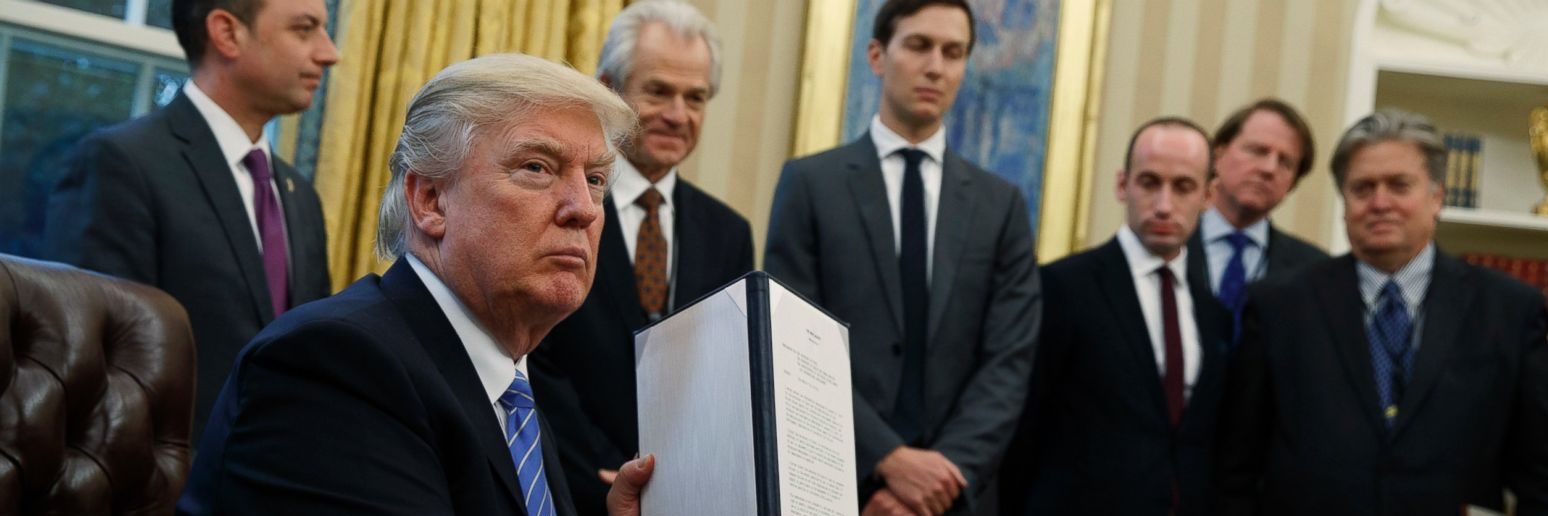In the new e-book Economics and Policy in the Age of Trump, University of Michigan Ross School of Business Professors Kyle Handley, Thomas Buchmueller, and Nirupama Rao detail the first policy changes of the early Trump presidency.
The authors highlight three of the most pronounced aspects of the Trump administration and its agenda: rhetoric, healthcare, and tax reform. Handley, who co-wrote his section with University of Maryland Professor Nuno Limão, notes that the president’s protectionist-style stances on trade are meaningful–even if he does not act on his promises. Dismantling NAFTA, for example, was a key talking point during the election campaign. But renegotiating the global trade agreement, made official 23 years ago, has been put on unofficial hiatus. Newly proposed changes “promised no major modifications of the sort that the president has hinted he will seek,” according to the New York Times. Despite backing away from sweeping changes, Handley and Limão argue that uncertainty around NAFTA alone can derail potential investment.
“The mere possibility of a trade war or tariffs going up distorts the decisions firms make, and that has implications for real economic activity,” Handley writes. “It means some investments don’t happen, workers that might have been retained are laid off. A tariff might be beneficial for some firms, but I’d be surprised if the gains make up for other losses that would ensue.”
Healthcare, meanwhile, remains a more prominent focus. Congress, along with the Trump administration, is maintaining efforts to replace the Affordable Care Act with the American Health Care Act, but their timeline has been repeatedly delayed as the AHCA is “shaping up to be the least popular legislation in decades.”
Buchmueller and U-M Ford School Professor Helen Levy argue the new legislation would gradually strip health insurance from millions over the course of several years, while actually raising customer premium pricing. Yet, they also find significant problems with the ACA, particularly with the tax subsidy structure the ends up helping those who are already at a financial advantage. It is worth noting that Buchmueller was the Senior Health Economist at the White House Council of Economic Advisers under former President Obama.
Intertwined with the AHCA is large-scale tax reform. Current GOP administration proposal changes promise to drastically cut taxes and to pay for this by reducing Medicaid funding. The benefit of the cut largely goes to the top income bracket, notes Nirupama Rao, who will officially be joining the Ross School of Business this summer.
Rao likens the potential changes to the massive 1986 policy shift under Ronald Reagan. “What the Reagan tax reform really did was cut individual tax rates on average and raise corporate taxes,” he writes. “In other words, it was paid for. Right now there are a lot of cuts on the table and not a lot of revenue-raising items.”
You can read the essays by Handley, Buchmueller, and Rao in Economics and Policy in the Age of Trump, available for download today.






